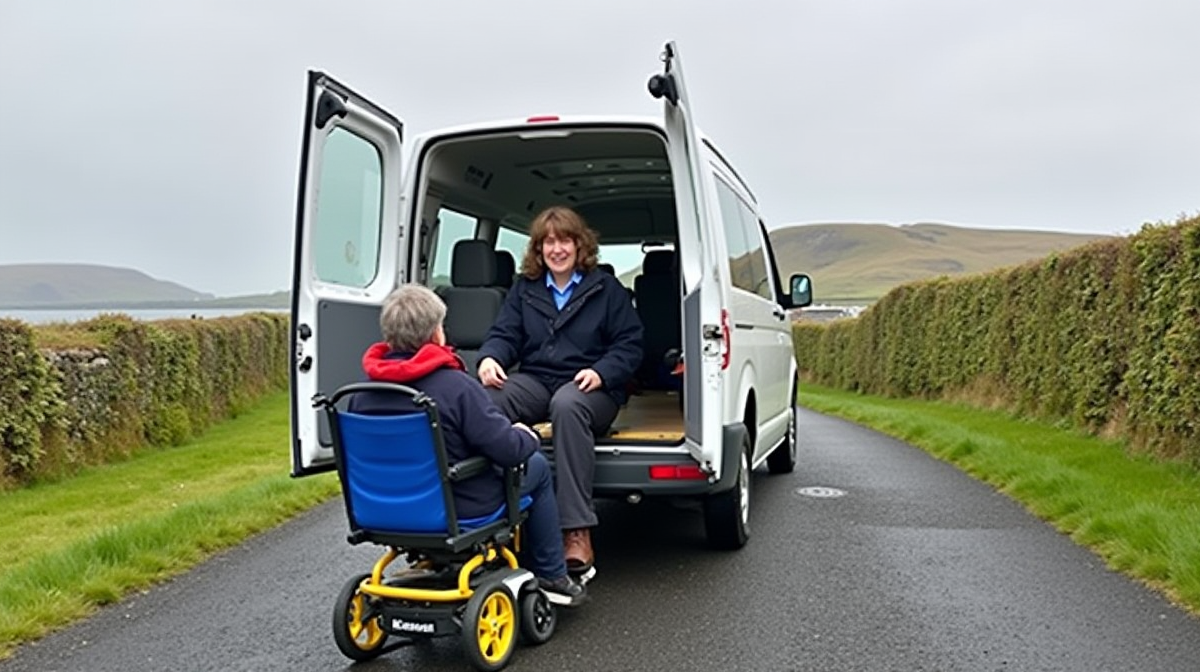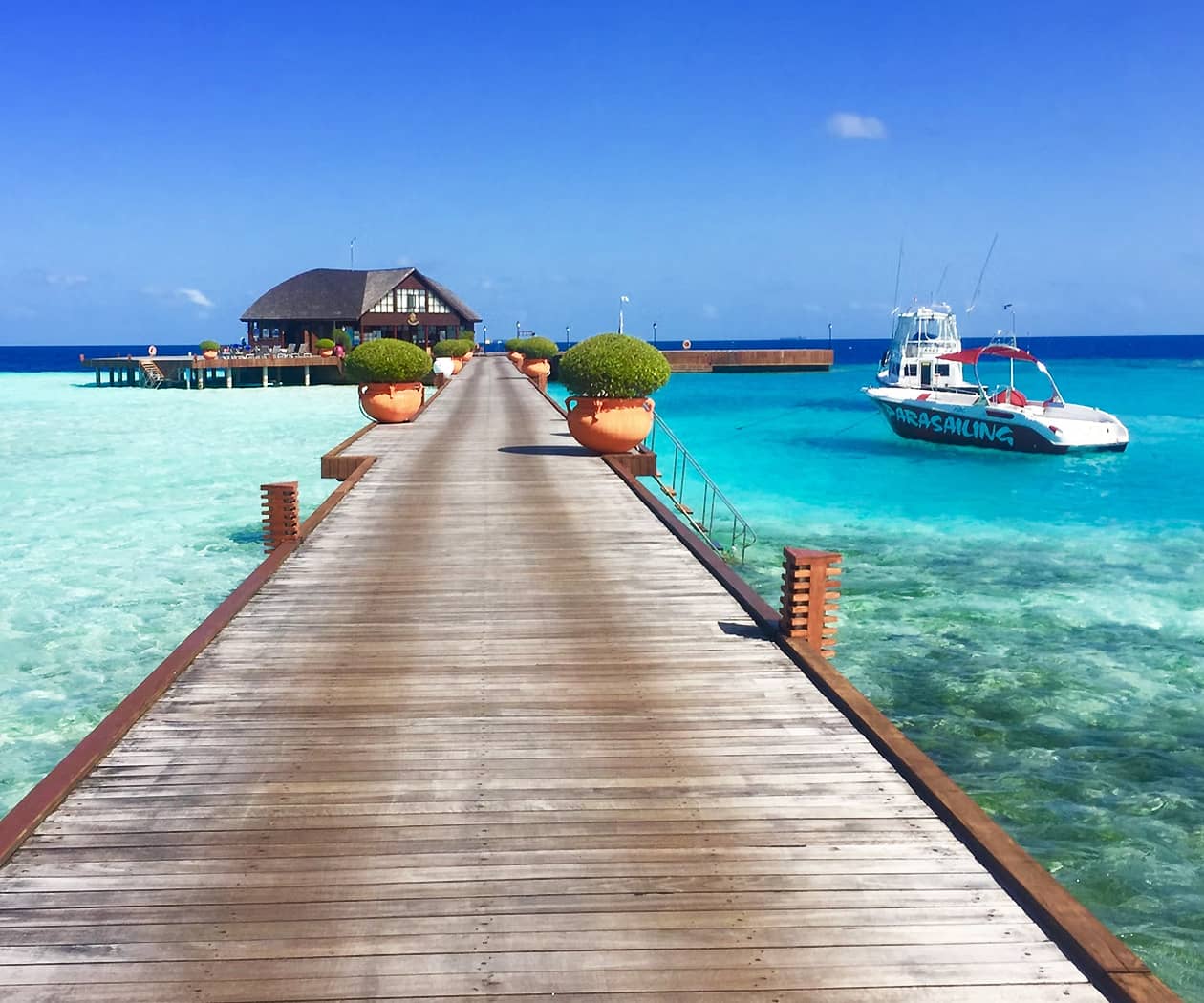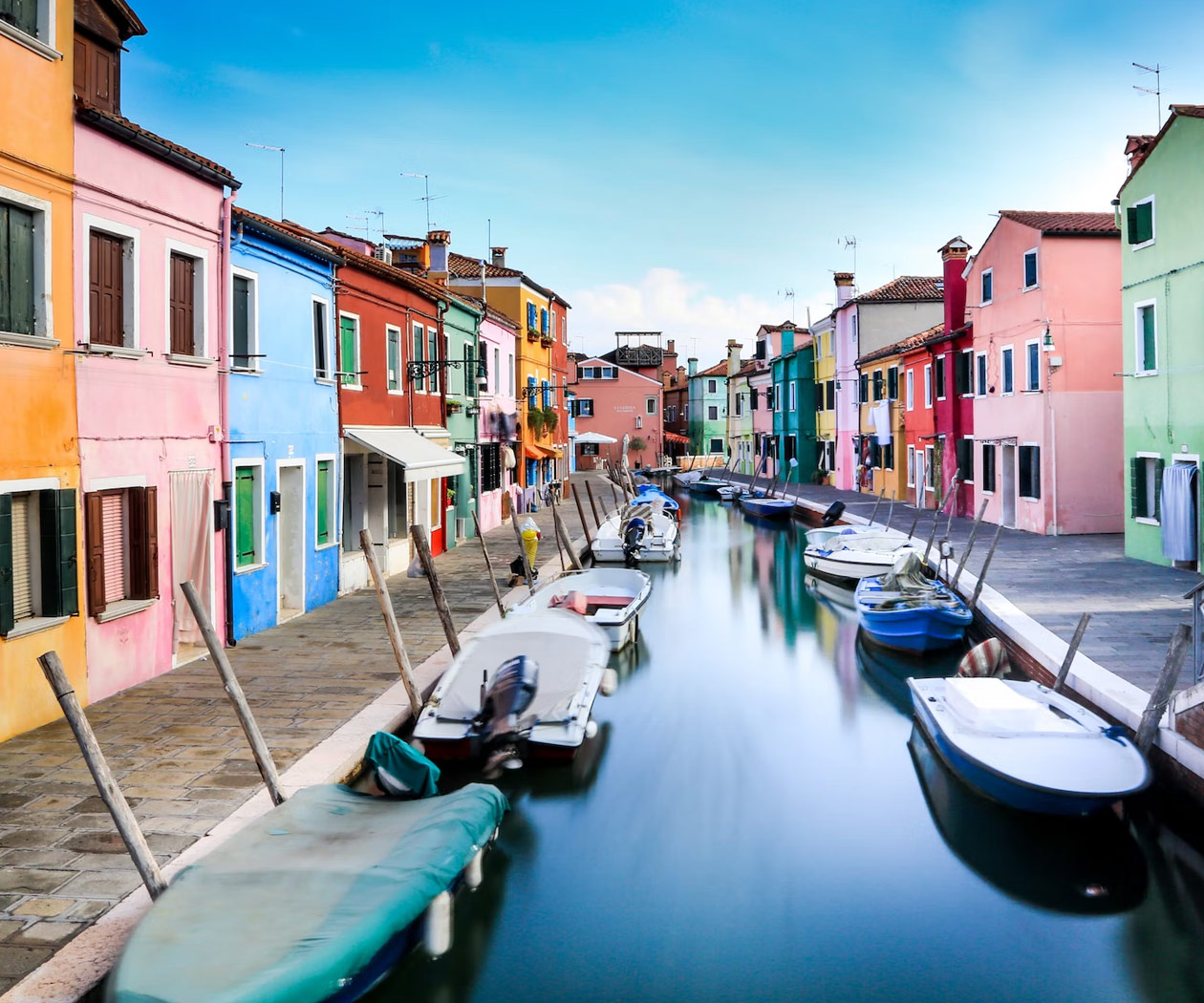Introduction
If there’s one thing that’s certain about traveling with a disability, it’s the need for comprehensive planning to avoid unexpected obstacles. It can be a daunting task to sift through endless websites and guides, each promising to offer the best and most up-to-date information. One common hurdle many disabled adventurers face when planning their trip to Ireland is accurate information about accessible car travel.
Perhaps you’ve previously encountered inadequate facilities, parking issues, or simply struggled to find comprehensively reviewed accessible destinations. This frustration can overshadow your journey and dull the excitement of exploring Ireland’s beautiful landscapes.
To help you navigate these challenges, we have meticulously pieced together a comprehensive guide that provides all the information you need in one place. ‘Exploring the Emerald Isle: A Comprehensive Guide to Accessible Car Travel in Ireland for Disabled Adventurers’ is a robust, reliable resource that offers solutions from parking and planning visits to finding fantastic accessible spots across Ireland. It promises convenience, peace of mind and a smoother journey for disabled adventurers. So buckle up and prepare to experience the Emerald Isle like never before!
Planning Your Accessible Road Trip
Road trips across Ireland can be absolutely enchanting, with stunning landscapes and historic landmarks gracing your path. However, when planning an accessible road trip, a few extra steps are required, but I assure you, the reward will be well worth it.
An Overview of Ireland’s Accessibility
Compared to many of its European counterparts, Ireland is doing quite well in terms of accessibility for all. The country adheres to the European accessibility standards, especially in popular tourist destinations. However, more remote, countryside locations might present some challenges. Nonetheless, during my trips around the country, even seemingly tough climbs were made possible due to friendly locals and well-thought-out accommodations.
Accessible Vehicle Hiring
One of the first boxes to tick on your list would be finding an accessible vehicle. Several companies in Ireland provide vehicles adapted for wheelchair-users or people with mobility issues. Some examples include Rent A Mobility Car and Disabled Accessible Travel. Always book ahead and provide detailed information regarding your specific needs for the best service.
Mapping Your Route
While deciding on your route, remember that accessibility varies. It’s always wise to pre-check the accessibility features of the locations you wish to visit. Websites like WheelchairTraveling.com or forums on Tripadvisor can be valuable.
Accessible Parking Regulations
Parking is usually free in Ireland for Badge-holders, a feature I made excellent use of on my road trip. You can apply for the European Parking Card, also known as the Disabled Person’s Parking Card, which is recognized in Ireland. Many car parks also have reserved spaces for people with disabilities.
Accessible Accommodation
Much of Ireland’s accommodation sector recognises the importance of accessibility. I booked most of my stays through Booking.com’s dedicated section for accessible hotels in Ireland. You may also check the Mobility Mojo Directory for more options.
Lessons Learned
Planning ahead was the real game-changer for my trip – everything from choosing appropriate routes to ensuring all accommodations were accessible. In the end, the effort paid off, and I witnessed Ireland’s captivating beauty without a hitch.
Rolling around Ireland should not be daunting, but rather an adventure filled with overcoming and embracing challenges. Remember, there is always an accessible path waiting for you, you just need to find it.

Navigating Parking in Ireland: Tips for Disabled Travelers
When you’re visiting the beautiful landscapes of Ireland, navigating parking can be one of the challenges you face, especially if you’re a disabled traveler. However, don’t let this deter you from exploring Ireland’s legendary castles, picturesque villages, and vibrant cities. Here’s a guide to help you ease the parking processes.
Parking Spaces for Disabled Travelers
Ireland places great importance on making its public spaces accessible to everyone. For disabled travelers, their version of the Blue Badge scheme is the Disabled Person’s Parking Card. In Ireland, approximately 4% of total parking spaces are dedicated to disabled permit holders. According to the Disabled Drivers Association of Ireland, over 75,000 disabled parking permits are in circulation in Ireland.
If you’re visiting from another part of Europe and have a European Parking Card, rest assured it will be recognized in Ireland, thanks to the European Union mutual recognition policy.
How to Apply for a Disabled Person’s Parking Card?
Those eligible to apply for a Disabled Person’s Parking Card are those with a permanent condition or disability that severely inhibits their mobility. Both Ireland residents and visitors can apply for this card through the Disabled Drivers Association of Ireland (DDAI) or Irish Wheelchair Association (IWA).
Accessible Parking Locations
Most public parking areas in Ireland have dedicated spots for disabled permit holders. For example, in Dublin alone, there are more than 700 on-street disabled persons’ parking bays. However, just as a personal experience, I remember struggling to find an empty spot at the buzzing Temple Bar Street on a Friday evening.
Always Display Your Disabled Badge
One of the main lessons learnt from my travels across Ireland is to always display the Disabled Person’s Parking Card. Even if you park in a space designated for disabled people, failure to properly display your badge might result in a penalty charge.
Utilise Parking Apps
Clever use of technology can help make parking easier. Parking Tag is a popular app in Ireland that not just shows the availability of parking spaces but also allows one to pay for parking electronically. There are similar apps available for different cities such as the APCOA Connect for Limerick.
Be Beware of Parking Scams
Sadly, there can be occurrences of parking scams, where people hoodwink authorities by using forged or expired disabled parking permits. In 2021, a woman in Donegal was fined for using her deceased father’s disabled parking permit.
It’s a challenge, surely, to find parking in crowded places like Dublin’s Grafton Street, but hopefully, this guide will make the process easier. Above all, remember to embrace the Irish spirit of resilience and fortitude. Happy travels!

Visiting Ireland’s Tourist Spots: Accessible Options
Travelling across Ireland is a delightful experience, but for those with disabilities, it can often present unique challenges. The good news is that Ireland continues to improve accessibility for all tourists making it an ideal choice for your accessible adventures. This guide will help navigate the scenic landscapes of Ireland, focusing on car accessibility, parking arrangements, and accessible tourist spots.
Car Accessibility and Parking
Ireland is moving forward in terms of car accessibility, making it easier for people with disabilities to traverse the majestic Irish landscapes. Hand controls, left foot accelerators, and hoists for wheelchair users are commonly available in rental cars. Companies like MobilityDirect provide a range of wheelchair-accessible vehicles for hire. Always remember to pre-book these facilities as availability could vary.
When it comes to parking, the Disabled Drivers Association of Ireland issues European Parking Cards. However, any disabled parking permit is generally accepted in Ireland. Spaces are mostly located close to entrances and exits, making your travel more convenient.
Planning Your Visit
The inclusive nature of Ireland’s tourist spots means you can plan your visit without worrying much about accessibility. However, it’s essential to check ahead with individual attractions.
With personal experience, I’ve found that the iconic Guinness Storehouse in Dublin, usually a crowded spot, provides easy access to elevators and toilets equipped with emergency cords. Additional facilities like induction loops for hearing-impaired guests are also provided.
Accessible Spot Choices
Ireland’s tourism sector takes pride in making itself accessible to everyone. Most major tourist spots – museums, heritage sites, and cultural landmarks – are wheelchair accessible.
- The Cliffs of Moher Visitor Centre has a wheelchair-friendly path that is surfaced and gently sloping.
- Blarney Castle, while many parts are still inaccessible due to their historical nature, offers a virtual reality tour for those who cannot reach the top.
- The Irish National Heritage Park provides wheelchair access to most of its outdoor exhibits, adding a thoughtful touch for inclusivity.
During my trip, the Trinity College particularly impressed me with its audio-visual room and accessible toilets for disabled guests; truly a commendable initiative.
As a final tip, learn the phrases people use in Ireland for disability and accessibility. Terms might differ, and knowing the right words can save you time and avoid any potential embarrassment. Above all, remember that the Irish are well-known for their ‘cead mile failte’ – a hundred thousand welcomes – and that extends to travelers of all abilities!
As per a report by the Central Statistics Office, Ireland saw nearly 10.6 million tourists in 2019. The heightened accessibility should only increase this number and make Ireland’s beauty accessible to all.

Understanding Ireland’s Road Rules for Disabled Drivers
In Ireland, all road users are treated with the utmost respect and dignity, including those with disabilities. When travelling by car in Ireland, it’s important to be aware of the various road rules and accessibility provisions in place to facilitate smooth and safe journeys for disabled drivers.
Parking and Blue Badges
If you are a driver with a disability, you are likely familiar with the Blue Badge scheme. In Ireland, the equivalent is known as the Disabled Person’s Parking Card. With this card, you can park in designated disabled parking spots not only in Ireland, but all across Europe. Getting this card typically involves a straightforward application process through the Disabled Drivers Association of Ireland. Keep in mind that using your card abroad still requires you to adhere to the relevant country’s rules and regulations for disabled drivers.
Ease of Accessibility
Ireland, like many progressive countries, has made remarkable strides in implementing accessibility features for disabled drivers. From larger parking spaces to wheelchair-friendly public facilities, the country is committed to making your visit as seamless as possible. Yet, like my self-experienced difficulties in a few more rural areas, be sure your itinerary accommodates for potentially limited disabled parking.
Understanding Road Traffic Signs
As a disabled driver, it’s essential to understand Ireland’s road signage. Ireland uses a mixture of signs; older signs usually in miles per hour and most new signs in kilometres per hour. Always maintain the correct speed limit and be vigilant when crossing the border into Northern Ireland, where speed limits are solely in miles per hour!
Vehicle Adaption
If you’re bringing your vehicle to Ireland or renting a car, vehicle adaptions can help augment your driving experience. The Irish Wheelchair Association offers advice on making such adaptations and the possible grants available for modifications. Adapting your vehicle to suit your needs can make exploring Ireland’s rugged and astonishing landscapes a dream come true. Remember my first time driving through Ring of Kerry, the vehicle adaptions were beyond useful.
Safety Above Everything
Even with all these helpful regulations and features in place, safety should always be your top priority. Wearing your seat belt is not just a legal requirement but also a potential lifesaver. Familiarize yourself with Ireland’s diverse road types, ranging from the high-speed motorways to rural single-track roads. Remember, if you’re used to driving on the right side of the road, it will take some time to get accustomed to driving on the left.
It’s evident that Ireland is committed to ensuring a safe and comfortable journey for disabled drivers. With some forethought and proper understanding of the road rules, your journey in Ireland doesn’t have to be any different from anyone else’s. Happy and safe travels!

Finding Accessible Accommodations in Ireland
Traveling with disabilities in a foreign land could be challenging, as you would want a comfortable place to stay where your accessibility needs are met. The good news is, in Ireland, you can find plenty of accommodations that cater to people with disabilities. Below are a few tips on how to locate them.
Research before Your Trip
Your trip begins long before you land in Ireland – in the comfort of your own home, while researching. Ireland has a range of B&Bs, hotels, and guest houses offering accessible units. Websites like Booking.com, Airbnb and Failte Ireland provide comprehensive lists of accessible accommodations across the country.
Verify with the Accommodation
It’s vital to connect directly with the accommodation providers to ensure the offered facilities meet your unique needs. What one person deems as accessible may not be the same for you. For instance, certain B&Bs may not have lifts, which would be a problem for those in wheelchairs. Also, always double-check the accessibility of the parking area.
Look for The National Accessibility Scheme
This scheme provides a rating system for accessible accommodations in Ireland. Always look out for places that have been certified under this scheme for better assurance that your needs will be catered to.
Accessible Tourism in Ireland
You’d be pleased to know that strides in accessible tourism have been made in Ireland. Accessible Tourism Ireland is a good resource for accessible travel experiences and services.
Through personal experience, I’ve found these tactics to come in handy while being on the road. During a visit to Galway, I relied heavily on online resources and thorough pre-trip planning. My companion and I were delighted at the level of accessibility and hospitality offered at a small B&B we ended up choosing. The staff were friendly and took extra measures to make the stay comfortable for me, from providing a portable ramp to including a lower hanging closet rail.
Travelling in an unfamiliar land is challenging enough without accessibility issues adding to it. A couple of my visits fell short when the ‘accessible’ accommodations did not meet my requirements, leading me to remember the golden rule: “Always verify before you rely.”
To conclude, Ireland offers a host of options for those with accessibility needs. All it takes is a little bit of research and communication before your trip to ensure you find the perfect accommodation for your needs. And, as always, remember to enjoy the journey as much as the destination itself!

Packing Essentials for an Accessible Road Trip in Ireland.
An accessible road trip through Ireland can be a truly rewarding experience if you plan your journey well. Packing the right essentials not only ensures a safe and comfortable journey but also allows you to fully enjoy the beautiful emerald landscapes, unparalleled history, and the warm hospitality Ireland is famous for.
Planning, Key Route and Accessibility Needs:
Your trip should be led by careful planning. Start by examining your route, the number of stops, your stay type. All of the places you plan to visit should have provisions for wheelchair access, ramps, and lifts. Her Majesty’s Passport Office has a list of accessible services in Ireland, which can be an invaluable resource for mapping your journey.
Accessible Vehicle:
Rent a vehicle with enough space for wheelchairs and other disability equipment. Companies like Mobility Solutions Ireland are reliable sources for accessible vehicle hire.
Health and Safety Essentials:
- Medications: Pack an extra supply of prescription medicines, in case of unexpected delays. Keep them in a cooler if they need to be refrigerated.
- First Aid Kit: Essential for minor emergencies on the road.
- Hand Sanitiser and Face Masks: While these have been part of our daily routine since Covid-19, they also offer protection from any other travel bugs.
- Water: Stay hydrated during your trip. Try to carry reusable bottles to reduce plastic waste.
Comfort Essentials:
- Travel Pillow and Blanket: Supporting your neck during long drives is essential.
- Weatherappropriate Clothing: Ireland’s weather can be unpredictable. Layers are your best bet.
Accessible Equipment:
Ensure you pack necessary mobility equipment. This includes any special devices that facilitate car transfers or help with wheelchair accessibility.
Tech Gadgets:
Don’t forget the tech that can make your trip hassle-free:
- Smartphone: Download apps that help track accessible parking spots and restrooms like WheelMate and Access Earth.
- Power Bank: Keep your devices charged on the move.
- GPS: Don’t solely rely on your phone for navigation, carry a standalone GPS unit.
During my own trip driving the gorgeous Wild Atlantic Way, I learned the importance of calling ahead to confirm the availability of special accessibility needs at each stop. A mishap at our B&B in Galway where the wheelchair lift was out of service underscored the need for such confirmation.
Remember, Ireland is a country that prides itself on its hospitality, and the locals are generally very helpful. Whether you’re gazing at the mighty Cliffs of Moher or enjoying traditional music in a Dublin pub, with these packing essentials at hand, your accessible road trip through Ireland can be smooth, comfortable, and filled with joy.

Conclusion
In conclusion, exploring the charm and charisma of the Emerald Isle has never been more accessible for disabled adventurers. It might not always be straightforward; like any journey, there could be hiccups or unexpected roadblocks. However, as we’ve detailed in this guide, arrangements for accessible parking, planned visits, and viable spots across Ireland are not only feasible but also increasingly becoming the standard.
Ireland, with its rich history, stunning landscapes, and warm, welcoming people, is more than ready to welcome everyone, regardless of physical limitations. With a heart full of enthusiasm, a planned itinerary, and this comprehensive guide in hand, you’re fully equipped to navigate the many wonders this beautiful country has to offer.
Remember that preparing for the journey is a journey unto itself. It’s recommended to initiate a conversation with your accommodation providers about your specific needs. Check in with local tourism offices and make use of online resources that cater to accessible travel needs, such as Mobility Mojo and Access Earth.
Don’t let any sort of disability discourage you from immersing yourself in the green fields, the unique music, or the mesmerizing stories of the Irish people. This guide hopes to serve as a reminder that each twist and turn, each meticulously planned detail, is an important part of your unique, exhilarating story of adventure.
Driving through the breathtaking Irish landscapes, drenched in hues of green and gold, is a privilege that everyone should experience. From climbing the majestic Cliffs of Moher to discovering the secret workings of the famous Guinness Storehouse, the Emerald Isle promises an unforgettable journey for all.
So, wander, explore, soak in Ireland’s natural grandeur and vibrant cultural life. Each city and sight is a testament to its deep-seated history and progressive future, a future that ensures inclusivity and accessibility for travelers of all abilities. The land of a hundred thousand welcomes, Ireland awaits you with open arms and endless possibilities. Happy travels!









